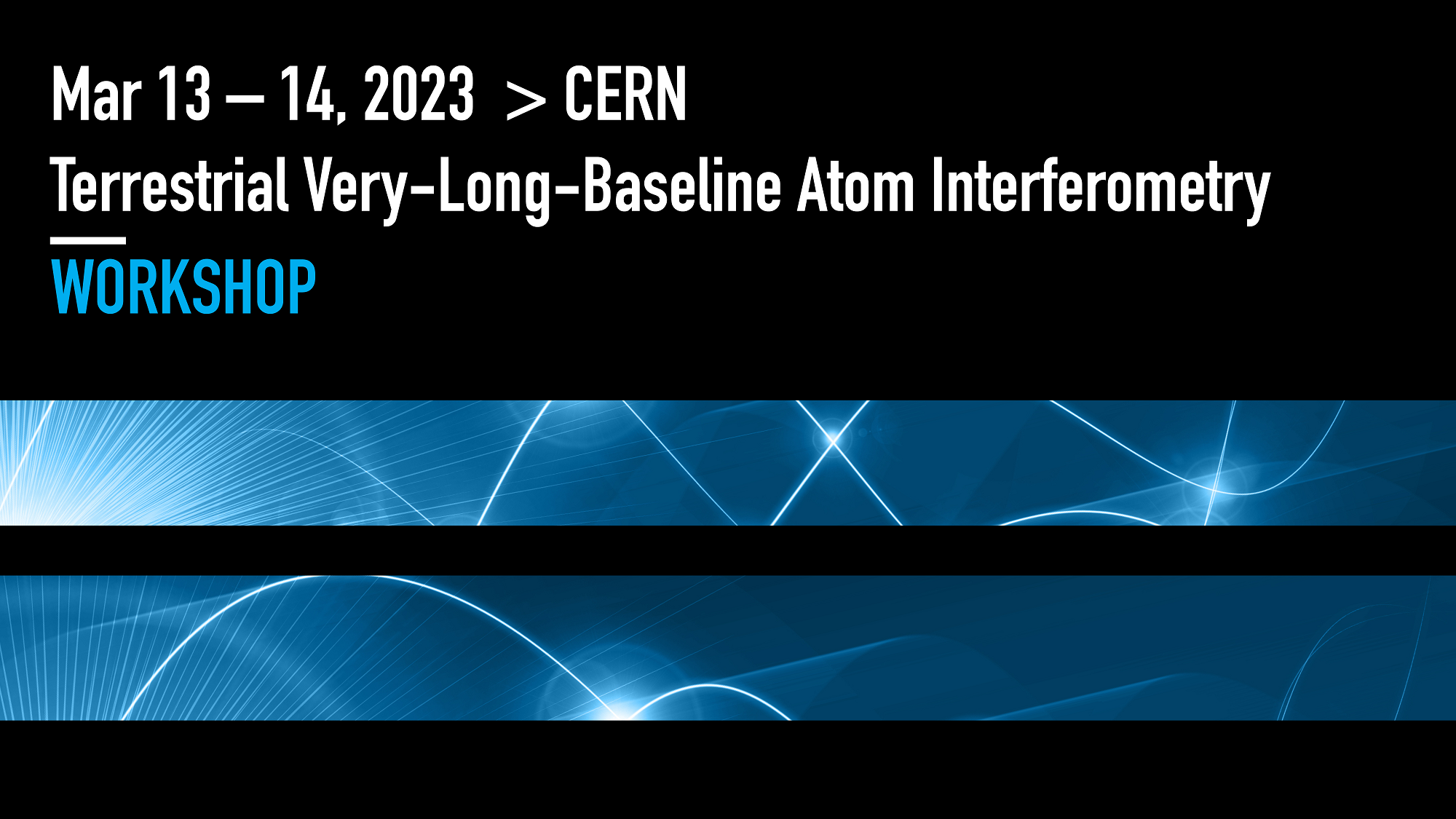 Preface
Preface
Atom Interferometry (AI) is a well-established quantum sensor concept based on the superposition and interference of atomic wave packets, which affords exceptionally high sensitivity, e.g., to inertial/gravitational effects. AI experimental designs take advantage of features used by state-of-the-art atomic clocks in combination with established techniques for building inertial sensors.
The experimental landscape of AI projects has expanded significantly in recent years, ranging from ultra-sensitive experimental setups to portable devices and even commercially available gravimeters. Several large-scale terrestrial AIs based on Cold Atom technologies are currently under construction, in planning stages or being proposed.
Five large-scale fully funded prototype projects are currently under construction, namely AION-10 at Oxford with possible 100m sites at Boulby in the UK and at CERN under investigation, a 10m fountain at Stanford & MAGIS-100 at FNAL in the US, MIGA in France, VLBAI at Hannover in Germany and a 10m fountain & ZAIGA in China [1-7]. These will demonstrate the feasibility of AI at macroscopic scales, paving the way for terrestrial km-scale experiments as the next steps.
There are projects to build one or more km-scale detectors, including AION-km at the STFC Boulby facility in the UK [1], MAGIA-advanced and ELGAR in Europe [8], MAGIS-km at the Sanford Underground Research facility (SURF) in the US [2], and advanced ZAIGA in China [4].
The goal is that by about 2035 at least one km-scale detector will have entered operation. These km-scale experiments would not only be able to explore systematically the mid-frequency band of gravitational waves and probe possible ultralight dark matter but would also demonstrate the readiness of key technologies ahead of a space-based AI mission such as AEDGE [9].
Scope of the Workshop
The main goals of the workshop will be to develop a Roadmap for the design and technology choices for one or several km-scale detectors to be ready for operation in the mid 2030s, which is supported by the cold atom community and the potential user communities interested in its science goals. This Roadmap will outline technological milestones as well as refine interim and long-term scientific goals.
This event will bring together the cold atom, astrophysics, cosmology, and fundamental physics communities and will build upon the Community Workshop on Cold Atoms in Space held in September 2021 [9], which reviewed the cold atom experiment landscape for space and established a corresponding Roadmap for cold atoms in space [10].
International Organisation Committee
Kai Bongs, University of Birmingham, UK
Philippe Bouyer, CNRS, Institut d’Optique, France
Oliver Buchmueller, Imperial College London, UK
Benjamin Canuel, CNRS, Institut d’Optique, France
Marilù Chiofalo, University of Pisa and INFN Pisa, Italy
John Ellis, King’s College London, UK
Naceur Gaaloul, Leibniz Universität Hannover, Germany
Jason Hogan, Stanford University, US
Timothy Kovachy, Northwestern University
Ernst Rasel, Leibniz Universität Hannover, Germany
Guglielmo Tino, Università di Firenze and LENS, Italy
Wolf von Klitzing, IESL-FORTH, Greece
Mingsheng Zhan, Wuhan Institute of Physics and Mathematics, China
Local Organisation Committee
Gianluigi Arduini, CERN, Geneva, Switzerland
Sergio Calatroni, CERN, Geneva, Switzerland
Albert De Roeck, CERN, Geneva, Switzerland, and University of Antwerp, Belgium
Michael Doser, CERN, Geneva, Switzerland
Elina Fuchs, CERN, Geneva, Switzerland
UPDATE: Poster Session Support for PhD Students and AVS Quantum journal special collection volume:
We are also pleased to announce that we have secured funding from CERN and AVS Quantum for PhD students to participate in our dedicated Poster Session. The support for the selected PhD students will be equivalent to about 250 Euro compensation, and interested candidates can apply for the Poster Session support via the registration link on this page.
AVS Quantum journal also plans a special collection volume for our workshop, which provides the opportunity for Speakers and Poster Session presenters to write-up their contribution in a dedicated issue.
UPDATE: Visit to the CERN Accelerator Control Room (Prévessin site) on Wednesday March 15th at 9:00
We will be organizing a visit to the CERN accelerator control room on Wednesday March 15th at 9:00, open to all registered in-presence participants. Interested participants are requested to tick the appropriate box in the registration form (or update it if you already registered). Please note that the Control Room is in the CERN Prévessin site (France): it's your responsibility to have with you all relevant documents to cross the French-Swiss border, as well as your CERN badge or visitor pass.
[1] L. Badurina et al., AION: An Atom Interferometer Observatory and Network, JCAP 05 (2020) 011, [arXiv:1911.11755]
[2] Susannah M. Dickerson et al, Multiaxis Inertial Sensing with Long-Time Point Source Atom Interferometry, Phys. Rev. Lett. 111, 083001 (2013), [arXiv:1305.1700]
[3] M. Abe et al., Matter-wave Atomic Gradiometer Interferometric Sensor (MAGIS-100), Quantum Sci. Technol. 6 (2021) 4, 044003, [arXiv:2104.02835].
[4] B. Canuel et al., Exploring gravity with the MIGA large scale atom interferometer, Sci. Rep. 8 (2018), no. 1 14064, [arXiv:1703.02490].
[5] D. Schlippert et al,” Matter Wave Interferometry for Inertial Sensing and Tests of Fundamental Physics”, Presented at the Eighth Meeting on CPT and Lorentz Symmetry, Bloomington, Indiana, May 12-16, 2019 (2020), [arXiv:1909.08524]
[6] L. Zhou, Y. Xiong et al. Development of an atom gravimeter and status of the 10-meter atom interferometer for precision gravity measurement. Gen Relativity & Gravitation 43, 1931–1942 (2011).
[7] M.-S. Zhan et al., ZAIGA: Zhaoshan Long-baseline Atom Interferometer Gravitation Antenna, Int. J. Mod. Phys. D28 (2019) 1940005, [arXiv:1903.09288].
[8] B. Canuel et al., ELGAR—a European Laboratory for Gravitation and Atom-interferometric
Research, Class. Quant. Grav. 37 (2020), no. 22 225017, [arXiv:1911.03701].
[9] https://indico.cern.ch/event/1064855/
[10] I. Alonso et al., Cold Atoms in Space: Community Workshop Summary and Proposed Road-Map (2022) [arXiv:2201.07789].
